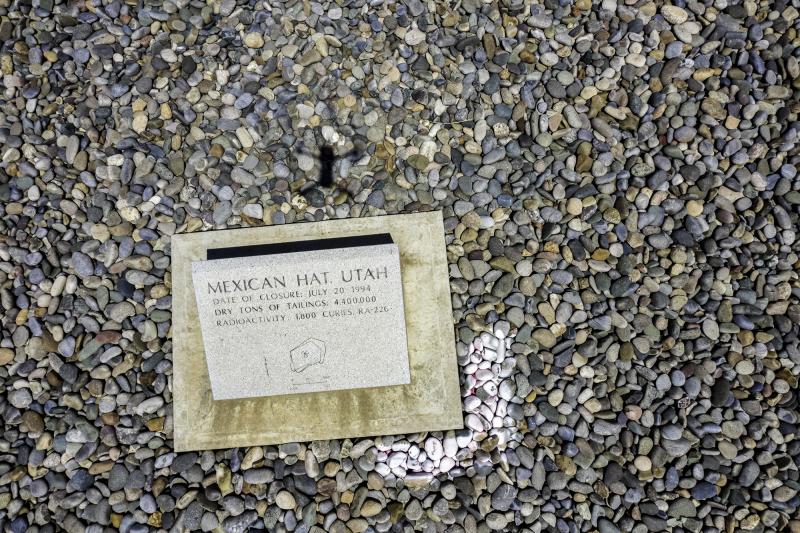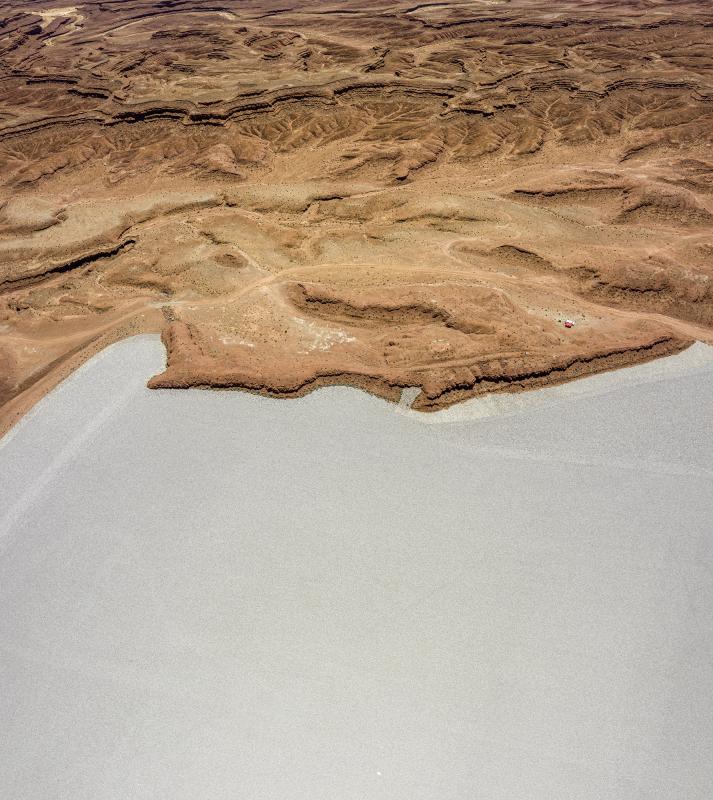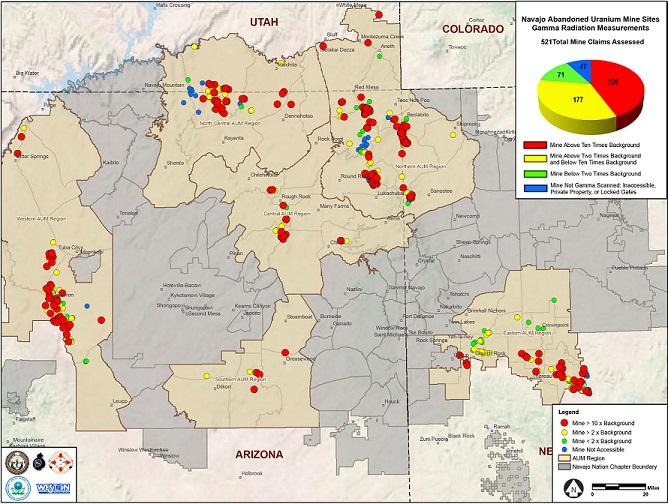Connecting the Dots for a Just Transition post-uranium extraction on Diné Land with App-activated, storytelling-based portraiture that emboldens restorative economics and memory making Will Wilson
“A person who knows few songs or stories is truly an impoverished person.”
Section I
This project raises awareness about a critical opportunity for a Just Transition on the Navajo Nation as it addresses remediation following uranium extraction that has poisoned the land and impoverished a people. I will create an unconventional photographic survey using drone-based, aerial and App- activated photography to help Diné people re-story our narrative. My project will present a portrait of environmental and social poverty, but more importantly, shape a platform for voices of resilience, wisdom, and vision for a transition to restorative systems of economy and memory making. This survey will lead to a series of exhibitions and educational curriculum to help advocate for a reformed approach to environmental remediation underway on Navajo Nation, with the aim of training Diné hydrologists, scientists, documentarians, and artists in remediation and activism instead of allowing former polluters to financially benefit from this work.
I blend traditional photographic process—historically used to document Indigenous peoples—with augmented reality technologies to create portraits that spring to life via a video overlay through the Talking Tintype App. Commanding portraits are mapped with moving-image content through a viewer’s smart device, connecting portraiture to the subject’s voice and agency. This proposal is unconventional and creative because it acknowledges that artists can be dynamically effective at identifying social and environmental problems and envisioning solutions. Guided by ethics-based aesthetics, restorative and new media accounts of the Land and People will inspire awareness, activism, and change. I aim to re-story this map of the Navajo Nation, connecting the dots that mark the locations of 521 abandoned uranium mines (AUMs) with a photographic survey that includes data collection, portraiture, and multi-vocal testimony.
Hypothesis
This map is a power-based abstraction that obfuscates the complex history and faulty logic of extraction on Navajo land.
A place-based re-telling of our relationship to the Earth using dynamic visualization and multi-vocal storytelling will illustrate problems and empower communities to creatively imagine and define solutions. Re-telling stories of the land by those most impacted by the false logic of extraction will enact what the Climate Justice Alliance has referred to as a “Just Transition,” which is a “vision-led, unifying, and place- based set of principles, processes, and practices that build economic and political power to shift from an extractive economy to a regenerative economy. The transition itself must be just and equitable; redressing past harms and creating new relationships of power for the future through reparations. If the process of transition is not just, the outcome will never be.”For a national precedent, see U.S. v. Tronox.
Section II
My experimental plan is based on a photographic survey of the people, land, and current remediation efforts connected to 521 Navajo Nation AUMs, focusing on the Western AUM Region, where I spent my formative years and where my family lives today. Most Americans know the story of the Navajo Code Talkers, who used our unwritten language as an unbreakable code to help win World War II. Lesser known, but arguably more consequential, is the fact that the fissile material used in the development of the atomic bomb and during the Cold War was sourced from Indigenous nations, in particular Navajo Nation.
Despite the well-documented toxicity associated with uranium mining, Navajo citizens were neither warned nor protected from the poisons produced by uranium extraction. As an adolescent, I played in the ruins of the Rare Metals processing mill four miles east of Tuba City, AZ. Today, it is a Superfund site. The legacy of this traumatic history will continue to affect Navajo citizens for generations. Early findings from a recent University of New Mexico study of 781 Diné women screened during its initial phase showed that 26% had concentrations of uranium that exceeded levels found in the highest 5% of the U.S. population, and newborns with equally high concentrations show that we continue to be exposed.
Using ground level and drone photography I will visualize the scope and impact of the AUMs on Dinétah. Photogrammetry, gamma radiation measurements, soil sampling, and other forms of citizen-scientist data collection will also be used to create 3D mappings of these sites. This data will document current reclamation and remediation efforts and assess the need for new ones while monitoring existing remediation.
More about Will Wilson
Will Wilson’s art projects center around the continuation and transformation of customary Indigenous cultural practice. He is a Diné photographer and trans-customary artist who spent his formative years living on the Navajo Nation. Wilson studied photography, sculpture, and art history at the University of New Mexico (MFA, Photography, 2002) and Oberlin College (BA, Studio Art and Art History, 1993). In 2007, Wilson won the Native American Fine Art Fellowship from the Eiteljorg Museum, in 2010 the Joan Mitchell Foundation Award for Sculpture, in 2016 the Pollock-Krasner Foundation Grant for Photography and in 2020 Wilson was the Doran Artist in Residence a the Yale University Art Gallery. Wilson has held visiting professorships at the Institute of American Indian Arts (1999-2000), Oberlin College (2000-01), and the University of Arizona (2006-08). In 2017, Wilson received the NM Governor's Award for Excellence in the Arts. His work is exhibited and collected internationally. Wilson is program Head of Photography at Santa Fe Community College.
See more of Will Wilson's work.
Will Wilson's work will be featured at the Utah Museum of Fine Arts upcoming exhibition Air, July 16th - December 11th, 2022. He was a featured speaker at Reframing Indigenous Remediation: Uranium on Dinétah.





